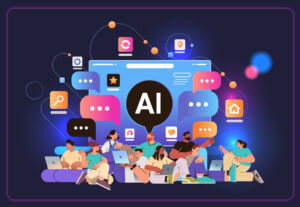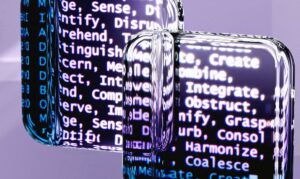Upskilling ‘client zero’: How PwC designs new AI tools with feedback from comms
The firm’s focus on responsible AI use requires building tools and training with employee input.

When PwC made a billion-dollar investment in its artificial intelligence capabilities in April 2023, the firm focused on serving its clients and people in a different way.
“First and foremost, it was about using AI responsibly, and we feel very strongly about that,” said PwC US and Mexico Communications Leader Megan DiSciullo. “We’ve been a leader in responsible AI for many, many years; we’ve put out policy papers and position papers around responsible use of AI and also its pros, cons, risks and opportunities.”
With responsible AI as a foundation, PwC felt confident collaborating with an ecosystem of technology business partners to advance generative AI and responsible AI internally. Working with companies that are making technology advancements like AWS, Salesforce, Microsoft and OpenAI empowered PwC to drive their innovations into client ecosystems.
Central to this application was treating its employees and internal use cases the same as they would external client work, in effect making PwC’s internal teams “client zero.”
“Given our size and scale in the U.S. and having so many diversified businesses, whether it’s HR, marketing, communications, finance, procurement, or even our tax/assurance, it’s important to learn and use gen AI ourselves so that we have credibility when we’re working with our clients on gen AI,” DiSciullo explained.
“By learning and experiencing it day-in and day-out, when we go out to talk to our clients, we can not only discuss the gen AI tools that we have to offer, but also the experiences that we have firsthand.”
Learning and development is central to ensuring these experiences happened consistently, which required cross-functional buy-in and creative solutions for customizing learning pathways.
DiSciullo shared more about this strategy ahead of her panel at Ragan’s Employee Experience Conference this August at Nashville’s Four Seasons.
Upskilling ‘client zero’
With about 75,000 employees in the U.S., PwC understood that integrating gen AI with the workforce was not just about the right tools, but also customized curriculum focused on how the tech can transform different functions.
“Whether it’s big sessions with thought leaders, teaching people how to prompt, curriculum on responsible AI or even just teaching people about what AI does and doesn’t do, a very important element remains the role of the human,” said DiSciullo.
Comms intentionally centers people in its positioning of this work. “Everyone focuses on the tech, and we also want to talk about the human—what our role is in making sure that the tools are used responsibly, ethically and in a secure environment that safeguards confidentiality, data privacy and client data,” DiSciullo continued.
Upskilling is customized based on a mixture of roles and manager conversations. A curriculum that spotlights responsible AI, prompting and learning about the future of AI is offered to the entire firm because they are core to the business, while other trainings are customized to the applications of a specific function.
The comms team also learns and teaches each other when they first get the tools.
“We did a whole lesson on how to prompt, because if you put in an ineffective prompt, you’re going to get garbage in, garbage out,” continued DiSciullo. “I couldn’t actually have the team think about mass personalization if they couldn’t create good prompts; it’s putting the cart before the horse.”
While it’s not a required curriculum, 95% of employees have attended learning sessions and completed trainings.
A feedback loop between the comms and product functions
Firm-wide interest and engagement in gen AI also gave comms the chance to partner with PwC’s products and technology function to build custom AI tools that only comms and marketing would use.
“This opportunity allowed us to co-create with the technologists specific tools that will help drive productivity and efficiency and help scale content in an effective and efficient way that really makes sense for communications and marketing teams,” explained DiSciullo.
“Our technologists are innovators, and they are there to help design for business problems, right? It was a close collaboration with those technologists to help co-create three tools specific for our function that can then be scaled to other functions across the firm as needed.”
Comms continues to learn from this partnership, providing feedback that technologists can then apply to tweaks and new versions that make the tools, tone and quality better.
“We have a group of AI champions on our communications team, and those folks really serve as the voice of our greater team back to the products and tech folks who will continue to iterate on the products,” DiSciullo explained.
3 proprietary gen AI tools developed from collaboration
The three tools created in partnership between comms and product/tech all focused on the function’s big goal of driving mass personalization. Both functions were guided by the idea that mass personalization at scale is much more efficient with AI than just with humans.
One tool to emerge from this partnership is a delivery planner, which helps map out how PwC conducts comms campaigns.
“If we’re thinking about launching a campaign on a specific date, AI can help us project plan by telling us, ‘These are all the things that you need to get done,’ and then there’s the human element on top of it,” DiSciullo explained. “It’s a blueprint that we can use and react to as we’re project managing a campaign, project or initiative.”
The second tool is the content generator, which both comms and marketing use in tandem. If you’re writing a blog and need to repurpose it for different mediums, you can check different boxes that let it know you need an internal newsletter, an X post or a blurb for the website.
“Certainly there needs to be human editing after the initial output, but we’ve programmed it so that it will come out not only at scale, but in the voice and the tone of the types of content that we need,” DiSciullo said.
“For example, we write a lot of our internal newsletters with a fun, sort of upbeat, casual tone, very simple words. That’s a little different than if we were writing a LinkedIn blog, which had a bit more formality. We’ve programmed the tool to understand the channel voice and the tone that we want to take. And that’s driven a ton of efficiency for us at scale, because we tend to communicate across many channels.”
The last custom tool PwC’s comms function developed is a content reviewer— crucially important to manage quality and risk in a regulated industry. This tool does not replace the work of PwC’s risk management professionals, but gives a first pass of words, phrases and tonality that may present risks based on what the firm knows and what it’s programmed.
“That helps teach us as communicators how to make the right tweaks, so that when it goes to our risk management team, they can focus on the more challenging, nuanced risk reviews as opposed to some of the medial reviews,” DiSciullo said.
A strategic productivity and efficiency play
Ultimately, all these tools position the comms function as a strategic collaborator across business lines, helping everyone play a role in maintaining quality, integrity and reducing risk by acting as the first line of defense—just like a proofreader or copy reader.
“This is a productivity and efficiency play for us,” said DiSciullo, “and my hope is that gen AI tools sit alongside other commtech tools that we have so it just becomes part of the commtech stack. And that together, they will help us work better, smarter, more efficiently to serve our internal clients and stakeholders.”
DiSciullo likens this innovation to when she started in comms and would frequently fax press releases to journalists until mail merges and tools for digital email became commonplace.
“While that changed the mechanism through which I was communicating with journalists, it didn’t change the inherency of trying to do media relations, connect with audiences and drive engagement with our people,” she said.
“That stuff is still the core of who we are and the value we bring to the business. The how, and hopefully the speed and quality, just allows us to work better, faster and smarter.”
Proprietary tools lead to responsible AI
All of this work is central to DiSciullo’s belief that communicators should be using secure AI tools that guarantee confidentiality and privacy.
“That’s got to be a given—we shouldn’t be on consumer tools because of the roles we play for our companies and enterprises,” she said.
“Whether you’re an agency or client service organization like us, we have to be constantly adapting because the AI environment is moving so quickly, the iterations of ChatGPT and the different tools out there, but also the way the market is responding to it.”
Join DiSciullo alongside comms and HR leaders from Microsoft, Nissan, Victoria’s Secret, REI, 3M, Cisco and more at Ragan’s Employee Experience Conference, Aug. 12-14 in Nashville, TN. Register now!
Justin Joffe is the editorial director and editor-in-chief at Ragan Communications. Follow him on LinkedIn.







